Judson Studios
Founded 1897
200 South Avenue 66 – map
Declared: 8/13/69
In 1969, the city's Cultural Heritage Commission designated Judson Studios a Los Angeles Historic-Cultural Landmark, describing it as a “vital contribution to Los Angeles’ artistic development through the fine art of stained glass.”
The early history of Judson Studios has two parts, existing separately for more than two decades until coming together in 1920.
William Lees Judson was born in Manchester, England, in 1842, immigrating to Brooklyn a dozen years later. In 1857, with his family, he moved to Canada. Judson served under Ulysses S. Grant during the Civil War after which he moved around, from Canada to New York to Ontario to Paris and back to Ontario. After thirteen years in Chicago, Judson, taking the advice of a friend, moved to Los Angeles in 1893 for health reasons. He designed his home near the Arroyo Seco in Garvanza.
In 1895, Judson, primarily a portrait painter, was chosen to be the head of USC’s nascent art department. Six years later, he became the university’s first dean of the College of Fine Arts and established the college across the street from his own home. (Judson designed the building himself in what McGrew and Julian say was a three-story Islamic-style building.) The structure was enlarged twice in the ‘00s before suffering a huge fire in 1910. Architects Robert F. Train and Robert Edmund Williams came in and designed a new building for the spot.
After the 1910 fire.
WLJ was the first president of the Arroyo Guild of Fellow Craftsmen, a collection of artisans who worked out of the Judson building beginning in 1909. In the middle of the picture below you can see the Arroyo Guild’s crest: rising sun; hammer in hand; and the words ‘We Can”.
By the mid-1890’s, William Lees Judson’s son, Walter Horace, was a committed stained glass artist. He had apprenticed at the age of thirteen, later studying at the Art Academy of Cincinnati and working at a variety of stained-glass firms.
In 1897, W.L. Judson convinced Walter Horace to leave his home and job in St Louis and set up shop in Los Angeles. That year, Walter Horace Judson opened the Colonial Art Glass Company in Mott Alley (Mott Alley sat a few blocks to the west of the Plaza downtown). Shortly thereafter, Walter Horace’s brothers, Lionel and Paul, joined as partners in the business. It became the W.H. Judson Art Glass Company in 1906 (Paul left the business sometime afterwards).
Flash forward to 1920, when USC reigned in its arts classes to its main campus west of downtown. It was then that Judson Studios moved into the school William Lees had established in Garvanza.
William Lees Judson died in 1928.
The blueprints are called cartoons. Here's one for a faceted work, where the the design is more suggested than defined.
The building was almost demolished in 1969 when the city said Judson Studios was “a stained-glass factory” and not suitable for the neighborhood. Luckily, with the help of the Cultural Heritage Commission, cooler heads prevailed.
Abdelkrim Kebir consulting the cartoon for the Adam and Eve work. He cuts the glass.
Judson Studios does not make stained glass, they create windows, about eighty percent of which, these days, are for secular buildings (or is it non-secular? I always get them confused – in any case, the religious kind). They create art with light, line, and color.
Judson stained glass can be found in buildings all over the world, from private homes to giant cathedrals. Their most popular work includes glass in Washington D.C.’s Capitol Prayer Room and the Air Force Academy Chapel in Colorado Springs. Here are just ten of an awful lot of spaces in Los Angeles in which you can see the studios’ work:
- Hollywood First Methodist Episcopal Church
- Hollyhock House
- Ennis House
- The rotunda skylight in the Natural History Museum of Los Angeles County
- First Congregational Church
- St Agnes Catholic Church
- St James Episcopal Church
- Inglewood Park Mausoleum
- St Saviour’s Chapel
- Memorial Branch Library
Here, an artist shades the glass with paint, usually a brownish or even black.
The oven in which the glass is fired at 1250 degrees.
Restoring and glazing.
That lead strip is called a came.
I picked up a lot of the above information from a tour a few weeks back, but if you’re up for learning more about Judson Studios and stained glass in general, you’re required to find a copy of Jane Apostol’s Painting with Light, published in 1997 by the Historical Society of Southern California. Thanks a ton, Jane, for filling in the gaps.
Dating from the old USC days three mottoes can be found painted on the walls throughout Judson Studios: “Only the best is worth while” (seen above in the glazier room shot); “Art is the only beautiful way of doing things”; and “No steps backward.” The last is my favorite – even on the days where you don’t feel all that philosophical, it still holds water as a practical rule of thumb in a studio full of stained glass works of art.
Up next: McGroarty Home
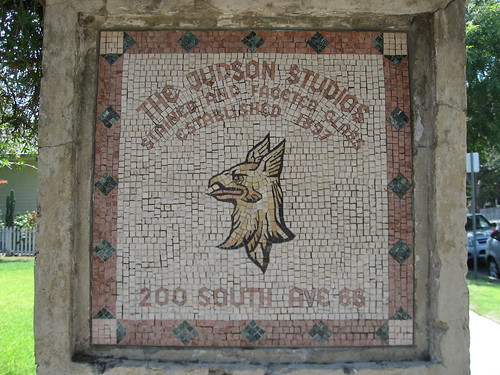
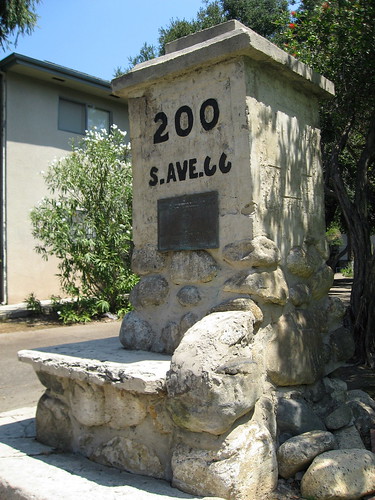
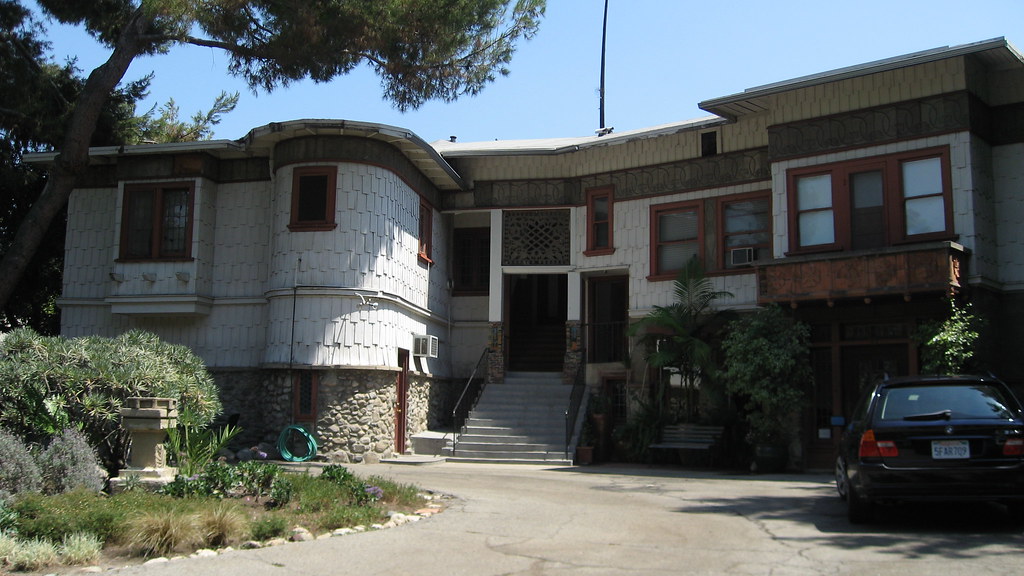
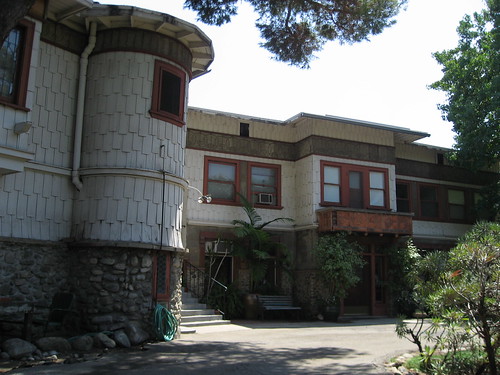
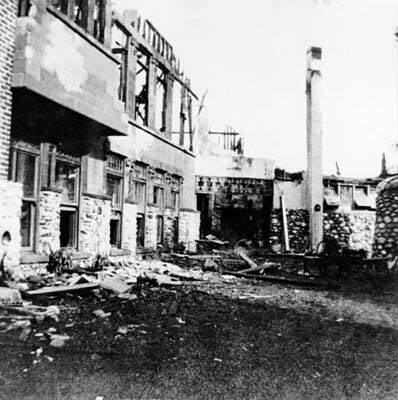


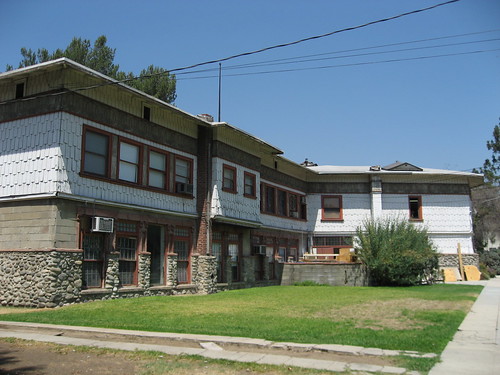
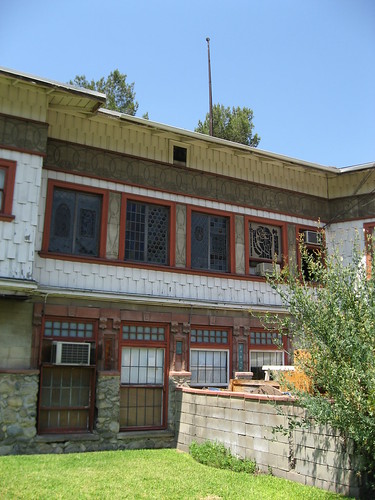
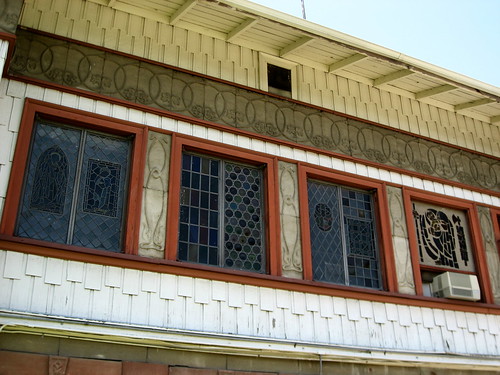
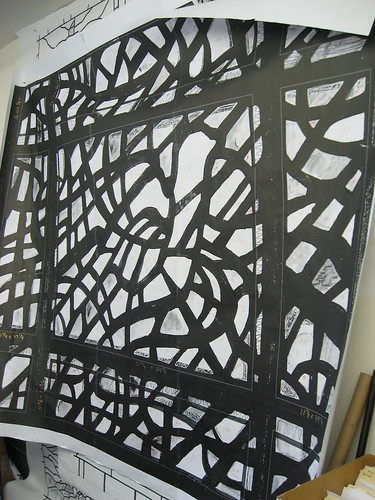



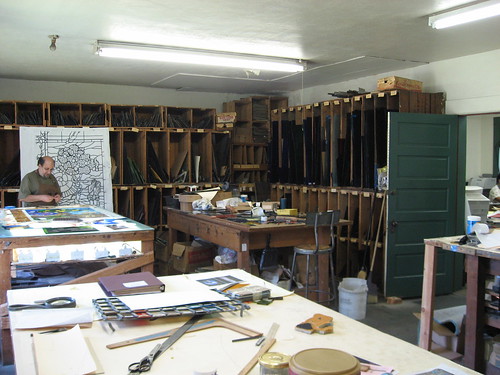
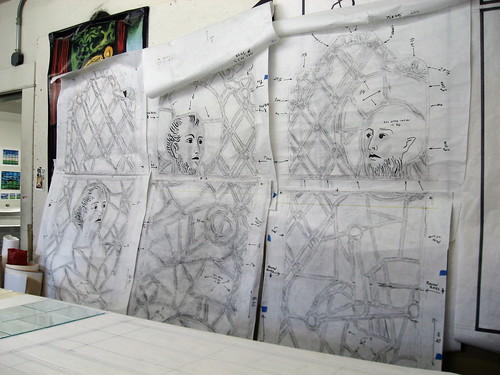
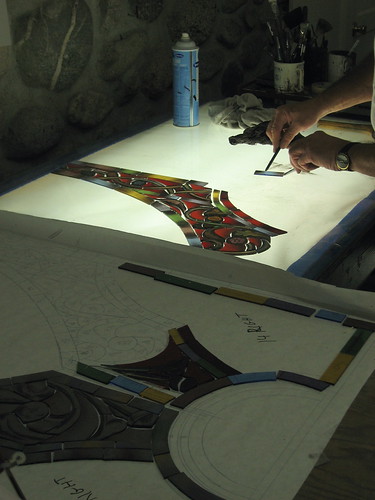

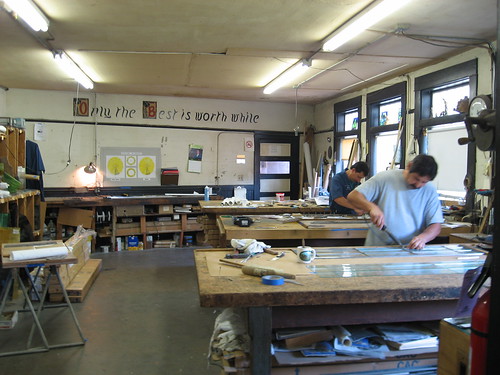

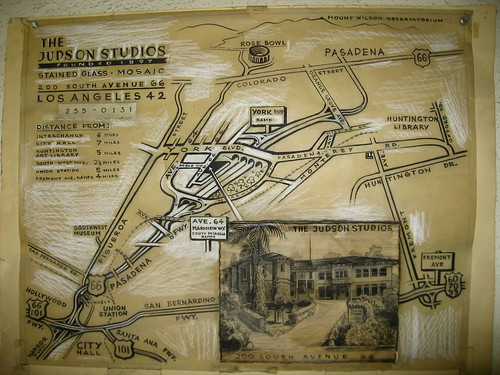
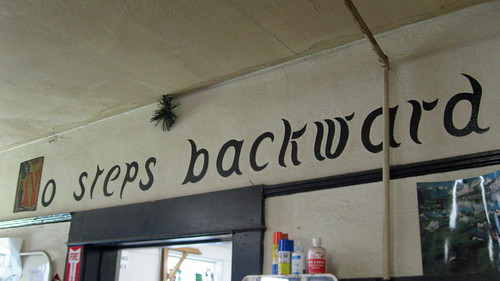

4 comments:
What a nice informative article! We (Samarkand Retirement Community... at Santa Barbara, CA)are thinking of touring Judson Studios so this was well worth the read. Thanks! Frances
Thanks, Frances. Funny, there was a busload of folks from Santa Barbara there the afternoon I took the tour. I hope you go.
If you walk just down the street to the Victorian home at the bend, you can see some of their work on the horizontal window at the center.
Thanks, anonymous. Down at the end of 66th? I'll check it out. I just visited the studio's rose window at Wilshire Christian, HCM 209.
Post a Comment